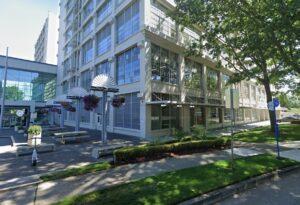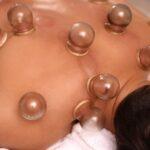Acupuncture for Pain Relief and Recovery: How It Works and Why It Helps
At Forest Park Wellness in Portland, Licensed Acupuncturist Dennis “Kaz” Kasunic has helped patients recover from all types of pain and injuries—from chronic back tension to post-accident whiplash—using the principles of Chinese medicine and the precision of modern acupuncture techniques. While conventional medicine often addresses pain with medication, acupuncture works differently. It helps the body repair itself by activating internal healing mechanisms, improving circulation, reducing inflammation, and encouraging deep relaxation. In the process, it supports both immediate pain relief and long-term recovery, without the side effects or risks associated with many drugs.
Kaz describes his approach simply: “Treat the whole body, not just the symptom.” Pain is rarely an isolated event—it often involves muscles, joints, nerves, circulation, and the nervous system all at once. By looking at the body as an interconnected system, acupuncture can address multiple factors simultaneously, helping patients not only feel better, but also heal more effectively.
The Mechanics of Acupuncture for Pain
At its core, acupuncture involves inserting very fine needles at precise points on the body. These points correspond to pathways known as meridians in Chinese medicine, but they also have measurable effects on muscles, nerves, and blood vessels from a biomedical perspective.
When the needle is inserted, sensory nerves send signals to the spinal cord and brain. This triggers a series of beneficial responses:
- Endorphin release, which reduces pain perception and promotes a sense of well-being.
- Increased blood flow, delivering oxygen and nutrients to tissues that need repair.
- Reduction of inflammation, easing swelling and stiffness.
- Regulation of nerve activity, calming irritated nerves or reducing hypersensitivity.
What makes this particularly powerful is that all of these processes happen naturally—acupuncture doesn’t introduce a drug into the body; it simply encourages the systems you already have to work at their best.
Improved Circulation: Fuel for Healing
One of the first changes acupuncture initiates is improved circulation to the targeted area. Blood flow carries oxygen, immune cells, and nutrients that are essential for tissue repair. It also helps remove waste products generated by injured or inflamed tissues. Research supported by the National Institutes of Health (NIH) shows that acupuncture can dilate blood vessels, improving both local and systemic circulation. It also increases levels of nitric oxide (NO) in the treated area. Nitric oxide is a natural compound in the body that relaxes blood vessel walls, allowing blood to flow more freely. For patients recovering from an injury—whether a sprained ankle or post-surgical stiffness—better circulation can make a measurable difference in recovery time.
Natural Pain Relief: Endorphins in Action
Endorphins are the body’s own painkillers. They bind to the same receptors in the brain as opioid medications, but without the risk of addiction or side effects. Acupuncture has been shown to significantly increase endorphin levels after a session, providing a chemical explanation for the pain relief patients feel. One study on beta endorphin levels found that after a single treatment, endorphin levels rose by more than 25% over baseline. However, within a week they returned to pre-treatment levels—suggesting that for lasting benefits, a series of treatments is often more effective than a one-time visit.
Pain management isn’t just about turning off the discomfort. It’s about building momentum in the body’s healing response so that each treatment builds on the last.
Reducing Inflammation: Calming the Body’s Alarm System
Inflammation is a natural and necessary part of the healing process—it’s the body’s alarm system that calls for repair crews. But when it lingers too long or becomes excessive, it can cause ongoing pain and limit mobility. Acupuncture helps regulate this process by decreasing pro-inflammatory cytokines (chemical messengers that promote inflammation) and increasing anti-inflammatory ones. This shift helps the body resolve inflammation more efficiently, which can mean less swelling, stiffness, and soreness. This anti-inflammatory effect is one reason acupuncture is frequently recommended for conditions like arthritis, tendonitis, or post-injury swelling.
Muscle Relaxation and Improved Mobility
Anyone who has dealt with chronic muscle tension knows how stubborn it can be. Tight, knotted muscles can restrict movement, compress nerves, and keep pain cycles going. Acupuncture can break this cycle by helping muscles release. By targeting trigger points—small, hyper-irritable spots in muscle tissue—acupuncture can prompt muscle fibers to relax. This not only relieves pain directly, but also improves range of motion and reduces the likelihood of further injury. Patients often notice that they can move more easily immediately after treatment, whether it’s turning their head without neck pain or bending their knee with less stiffness.
Nervous System Regulation: From “Fight-or-Flight” to “Rest-and-Digest”
Pain is not just a physical sensation—it’s also a nervous system experience. Chronic pain, in particular, can keep the body stuck in a low-level “fight-or-flight” state, where the sympathetic nervous system is dominant. This can lead to muscle tension, poor sleep, digestive issues, and even increased pain sensitivity. Acupuncture helps shift the balance toward the parasympathetic nervous system—the “rest-and-digest” mode where the body heals and recovers. By regulating nerve activity, it can calm overactive pain pathways, making it especially effective for nerve-related conditions like sciatica or neuropathy.
Beyond Physical Pain: The Mind-Body Connection
Although the focus may be on pain relief, patients often notice other positive changes as a side effect of their acupuncture treatments. Improved sleep, lower stress levels, and better overall energy are common. Chronic pain itself is a stressor on the body and mind. Harvard Health notes that the coexistence of chronic pain and depression can intensify both conditions. By addressing both physical pain and the underlying stress it creates, acupuncture offers a more comprehensive recovery experience.
What Conditions Can Acupuncture Help?
At Forest Park Wellness, Kaz treats a wide range of pain-related issues, including:
- Back and neck pain, including whiplash from auto accidents
- Joint pain from arthritis or injury
- Sports injuries, such as sprains, strains, or tendonitis
- Nerve pain, including sciatica and neuropathy
- Headaches and migraines
Post-surgical recovery to reduce swelling and stiffness
One of acupuncture’s unique advantages is its ability to address multiple issues in the same session. A patient with a knee injury might also experience tension headaches from altered posture—both can be treated in one visit.
The Importance of Consistency
Because the body’s natural pain-relieving chemicals like beta endorphins rise and fall over time, regular sessions often provide the best results. Some patients experience relief after just one or two visits, while others—especially those with long-standing or complex pain—may benefit from a longer treatment plan.
Kaz works with each patient to create a schedule that matches their goals, lifestyle, and recovery needs. “Healing is a process,” he notes, “and acupuncture works with your body’s timeline, not against it.”
Why Patients Choose Acupuncture
Many patients turn to acupuncture because they want effective pain relief without heavy reliance on medication. Others are looking for a complementary therapy that works alongside physical therapy, chiropractic care, or conventional medical treatment. The minimal risk of side effects makes it accessible for people who may not be able to take certain medications—such as pregnant women, those with digestive sensitivities, or individuals already on complex prescriptions.
Perhaps most importantly, patients appreciate the whole-body, personalized approach. Every session is tailored to the individual, not just the diagnosis.
Taking the First Step Toward Relief
If you’ve been living with pain—whether from an injury, chronic condition, or recent surgery—you don’t have to wait for it to “just go away.” Acupuncture offers a safe, natural way to reduce pain, improve mobility, and support your body’s own healing process. At Forest Park Wellness, Dennis “Kaz” Kasunic brings years of experience in both acute and chronic pain management, helping patients return to the activities and comfort they’ve been missing.
To learn more or to schedule your first session, schedule your appointment online, or call (503) 272-6646.








